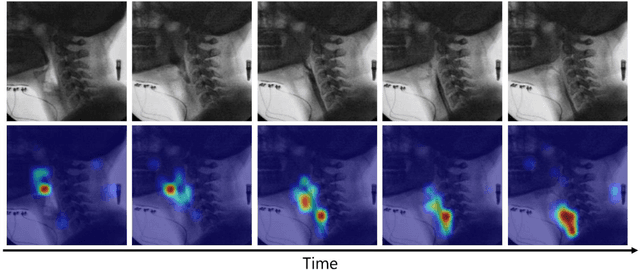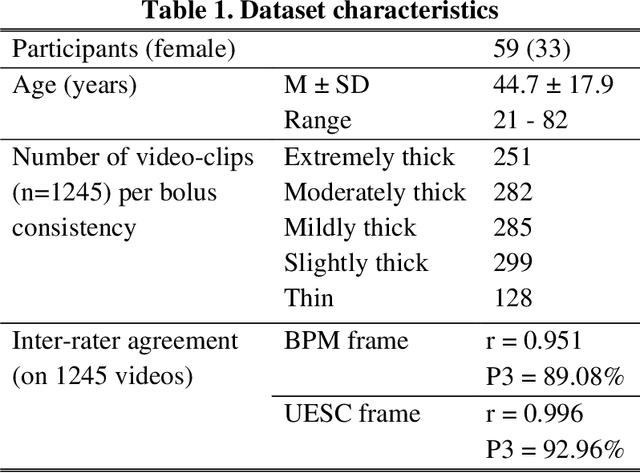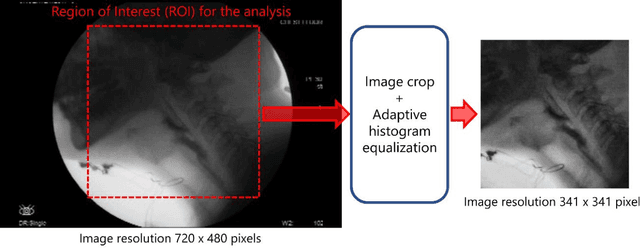Automated pharyngeal phase detection and bolus localization in videofluoroscopic swallowing study: Killing two birds with one stone?
Paper and Code
Nov 08, 2021



The videofluoroscopic swallowing study (VFSS) is a gold-standard imaging technique for assessing swallowing, but analysis and rating of VFSS recordings is time consuming and requires specialized training and expertise. Researchers have demonstrated that it is possible to automatically detect the pharyngeal phase of swallowing and to localize the bolus in VFSS recordings via computer vision approaches, fostering the development of novel techniques for automatic VFSS analysis. However, training of algorithms to perform these tasks requires large amounts of annotated data that are seldom available. We demonstrate that the challenges of pharyngeal phase detection and bolus localization can be solved together using a single approach. We propose a deep-learning framework that jointly tackles pharyngeal phase detection and bolus localization in a weakly-supervised manner, requiring only the initial and final frames of the pharyngeal phase as ground truth annotations for the training. Our approach stems from the observation that bolus presence in the pharynx is the most prominent visual feature upon which to infer whether individual VFSS frames belong to the pharyngeal phase. We conducted extensive experiments with multiple convolutional neural networks (CNNs) on a dataset of 1245 VFSS clips from 59 healthy subjects. We demonstrated that the pharyngeal phase can be detected with an F1-score higher than 0.9. Moreover, by processing the class activation maps of the CNNs, we were able to localize the bolus with promising results, obtaining correlations with ground truth trajectories higher than 0.9, without any manual annotations of bolus location used for training purposes. Once validated on a larger sample of participants with swallowing disorders, our framework will pave the way for the development of intelligent tools for VFSS analysis to support clinicians in swallowing assessment.
 Add to Chrome
Add to Chrome Add to Firefox
Add to Firefox Add to Edge
Add to Edge